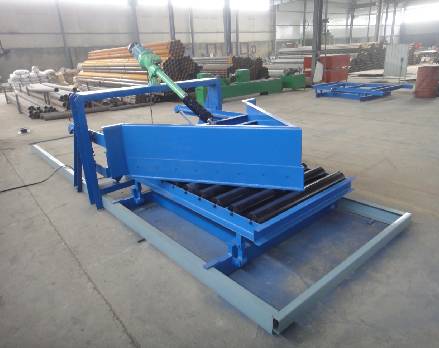 Afrikaans
Afrikaans  Albanian
Albanian  Amharic
Amharic  Arabic
Arabic  Armenian
Armenian  Azerbaijani
Azerbaijani  Basque
Basque  Belarusian
Belarusian  Bengali
Bengali  Bosnian
Bosnian  Bulgarian
Bulgarian  Catalan
Catalan  Cebuano
Cebuano  Corsican
Corsican  Croatian
Croatian  Czech
Czech  Danish
Danish  Dutch
Dutch  English
English  Esperanto
Esperanto  Estonian
Estonian  Finnish
Finnish  French
French  Frisian
Frisian  Galician
Galician  Georgian
Georgian  German
German  Greek
Greek  Gujarati
Gujarati  Haitian Creole
Haitian Creole  hausa
hausa  hawaiian
hawaiian  Hebrew
Hebrew  Hindi
Hindi  Miao
Miao  Hungarian
Hungarian  Icelandic
Icelandic  igbo
igbo  Indonesian
Indonesian  irish
irish  Italian
Italian  Japanese
Japanese  Javanese
Javanese  Kannada
Kannada  kazakh
kazakh  Khmer
Khmer  Rwandese
Rwandese  Korean
Korean  Kurdish
Kurdish  Kyrgyz
Kyrgyz  Lao
Lao  Latin
Latin  Latvian
Latvian  Lithuanian
Lithuanian  Luxembourgish
Luxembourgish  Macedonian
Macedonian  Malgashi
Malgashi  Malay
Malay  Malayalam
Malayalam  Maltese
Maltese  Maori
Maori  Marathi
Marathi  Mongolian
Mongolian  Myanmar
Myanmar  Nepali
Nepali  Norwegian
Norwegian  Norwegian
Norwegian  Occitan
Occitan  Pashto
Pashto  Persian
Persian  Polish
Polish  Portuguese
Portuguese  Punjabi
Punjabi  Romanian
Romanian  Russian
Russian  Samoan
Samoan  Scottish Gaelic
Scottish Gaelic  Serbian
Serbian  Sesotho
Sesotho  Shona
Shona  Sindhi
Sindhi  Sinhala
Sinhala  Slovak
Slovak  Slovenian
Slovenian  Somali
Somali  Spanish
Spanish  Sundanese
Sundanese  Swahili
Swahili  Swedish
Swedish  Tagalog
Tagalog  Tajik
Tajik  Tamil
Tamil  Tatar
Tatar  Telugu
Telugu  Thai
Thai  Turkish
Turkish  Turkmen
Turkmen  Ukrainian
Ukrainian  Urdu
Urdu  Uighur
Uighur  Uzbek
Uzbek  Vietnamese
Vietnamese  Welsh
Welsh  Bantu
Bantu  Yiddish
Yiddish  Yoruba
Yoruba  Zulu
Zulu Key Components of Conveyor Systems and Their Functions
Understanding Conveyor Machine Parts The Backbone of Efficient Material Handling
In the modern industrial landscape, conveyor systems play an essential role in facilitating efficient material handling. These systems consist of various components working in unison to ensure smooth and effective transport of goods across production lines, warehouses, and distribution centers. Understanding the key parts of conveyor machines is crucial for optimizing their functionality and ensuring prolonged operational life.
The Conveyor Belt
At the heart of any conveyor system lies the conveyor belt, a continuous loop of material that moves products from one point to another. Conveyor belts are made from diverse materials, including rubber, metal, and plastic, each chosen based on the specific application, weight of the items being transported, and environmental conditions. The belt's surface can be flat, modular, or textured, which aids in gripping and minimizing product slippage during transport.
Drive System
The drive system of a conveyor includes the motor and gear mechanism responsible for powering the belt's motion. Motors come in various forms, including electric, hydraulic, or pneumatic, depending on the operational settings. The drive system converts energy into mechanical motion, enabling the conveyor belt to move efficiently. It's essential for the drive system to be adequately designed and maintained, as it directly influences the speed and reliability of the entire conveyor system.
Rollers
Rollers are cylindrical components that support the conveyor belt and facilitate its movement. They can be installed at various points along the conveyor line, primarily at the loading and unloading zones or within the conveyor structure itself. Rollers come in various forms, including idler rollers, which support the belt without power, and driven rollers, which are connected to the drive system. Proper roller alignment, maintenance, and selection are pivotal in preventing belt wear and ensuring smooth operation.
Idlers
conveyor machine parts

Idlers are non-powered rollers that help maintain belt tension and alignment. They are strategically positioned within the conveyor system to support the belt, allowing it to maintain its shape and contour. Idlers reduce friction and support the weight of the conveyed material, which helps in lowering the energy consumption of the entire system. They also play a vital role in minimizing belt edge wear, enhancing the lifetime of the conveyor belt.
Frame and Structure
The frame of a conveyor system provides the necessary structural support and layout for the entire mechanism. It is typically made from steel or aluminum and is designed to withstand the weight of the materials being transported, as well as the dynamic forces exerted during operation. A robust frame not only enhances the durability of the conveyor but also contributes to the longevity and stability of the entire system.
Supports and Stabilizers
To ensure smooth operation, conveyor systems feature supports and stabilizers that help maintain the alignment of the belt and rollers. These components prevent unwanted movement that could lead to misalignment or slippage, ensuring the effectiveness of the system. Properly installed supports aid in directing the flow of goods, minimizing material loss, and enhancing overall productivity.
Safety Devices
Safety is a paramount concern in conveyor operations. Various safety devices, such as emergency stop switches, guards, and safety light curtains, are integrated into conveyor systems to protect workers and equipment. These devices ensure that the system can be quickly halted in the event of an emergency, minimizing the risk of accidents and injuries.
Conclusion
A well-functioning conveyor system is integral to the efficiency of modern manufacturing and logistics operations. Understanding the various components, including the conveyor belt, drive system, rollers, idlers, frame, supports, and safety devices, is vital for maintaining optimal functionality. By investing in quality parts and implementing proper maintenance practices, businesses can enhance operational efficiency, minimize downtime, and ensure a safe working environment. In the fast-paced world of material handling, the importance of conveyor machine parts cannot be overstated – they are indeed the backbone of effective industrial processes.
-
Revolutionizing Conveyor Reliability with Advanced Rubber Lagging PulleysNewsJul.22,2025
-
Powering Precision and Durability with Expert Manufacturers of Conveyor ComponentsNewsJul.22,2025
-
Optimizing Conveyor Systems with Advanced Conveyor AccessoriesNewsJul.22,2025
-
Maximize Conveyor Efficiency with Quality Conveyor Idler PulleysNewsJul.22,2025
-
Future-Proof Your Conveyor System with High-Performance Polyurethane RollerNewsJul.22,2025
-
Driving Efficiency Forward with Quality Idlers and RollersNewsJul.22,2025





























